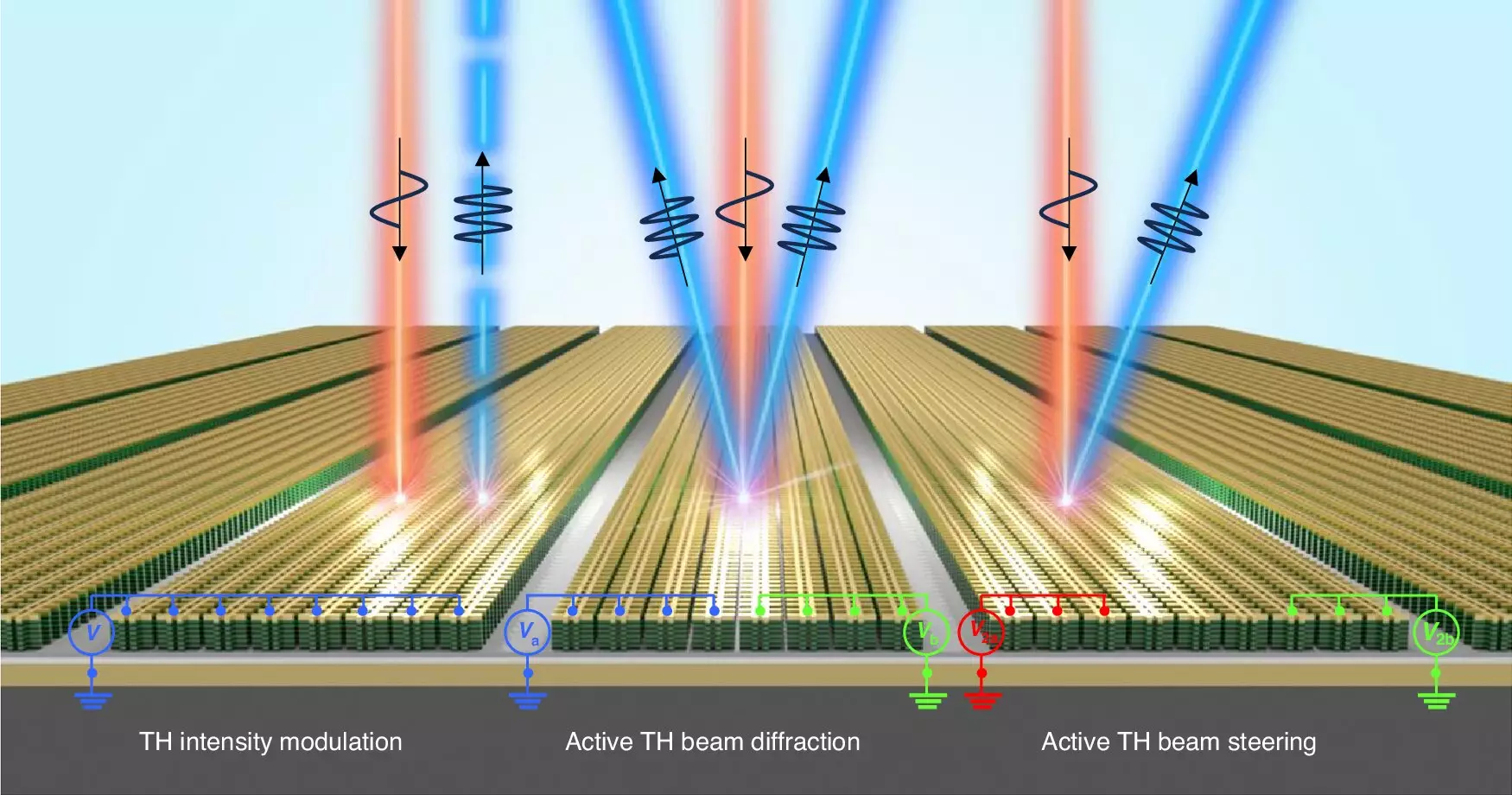Recent advancements in nonlinear optical metasurface technology represent a pivotal moment for the field of photonics. This groundbreaking research, spearheaded by Professor Jongwon Lee and his team at UNIST, introduces a novel metamaterial architecture characterized by structures smaller than the wavelength of visible light. Such microscale innovations promise to enhance various sectors, notably in communication technologies and medical diagnostic instruments—for instance, through the development of advanced quantum light sources.
The implications of this technology are profound. By employing an intersubband polaritonic metasurface intertwined with multiple quantum wells (MQWs), the researchers have successfully demonstrated remarkable capabilities in third-harmonic generation (THG). This technology achieves an impressive 450% modulation depth, while simultaneously achieving an 86% reduction in zero-order THG diffraction, indicating a significant leap forward in controlling light properties.
Nonlinear optics operates on principles where the interaction of light and matter produces phenomena that are fundamentally different from traditional linear behaviors. This interaction enables the generation of multiple frequencies from a single coherent source, allowing for highly efficient information transfer capabilities that far exceed what conventional single-wavelength lasers can accomplish. A common example of nonlinear optics in everyday use can be seen in green laser pointers, which utilize such principles for effectiveness.
Professor Lee’s research transcends previous limitations in electrical control of nonlinear optical phenomena, allowing for unprecedented modulation abilities. The prototypes developed show promise for creating thin, lightweight optical instruments—imagine laser devices as thin as paper, incorporating materials that are even slimmer than human hair. This capability offers a transformative potential for integrating advanced optical systems into compact formats suitable for a broader range of applications.
Unprecedented Control Over Light Properties
What sets this new technology apart is its ability to achieve voltage control over second-harmonic generation (SHG), a capability that has eluded researchers until now. The independent modulation of both intensity and phase of THG allows for intricate control of light properties, including not just wavelength adjustments but also manipulation of intensity and phase interactions. Professor Lee notes the vast applications this technology opens up, particularly in fields such as cryptography, dynamic holography, and next-generation quantum sensors.
The adaptable nature of these optical metasurfaces exemplifies the ongoing evolution within the field, pushing the boundaries of how light can be manipulated for technological advancement. Researcher Seongjin Park emphasizes that the intrinsic properties of their metasurface are determined by the unique combinations of semiconductor layers and metal structures, further refining their potential applications.
The transition to using nonlinear optical metasurfaces heralds a new era in the development of optical devices that can transform the way we understand and utilize light. As researchers continue to refine this technology, its potential integration into everyday applications grows increasingly clear. From enhancing the capabilities of quantum communication systems to providing new tools for medical diagnostics, this transformative approach to light manipulation is poised to redefine various industries, characterizing a future where the interplay between light and matter yields innovative solutions to complex problems. The journey from a theoretical concept to practical application signifies not only the brilliance of the research team but also the unending quest to harness the power of light for human advancement.


Leave a Reply